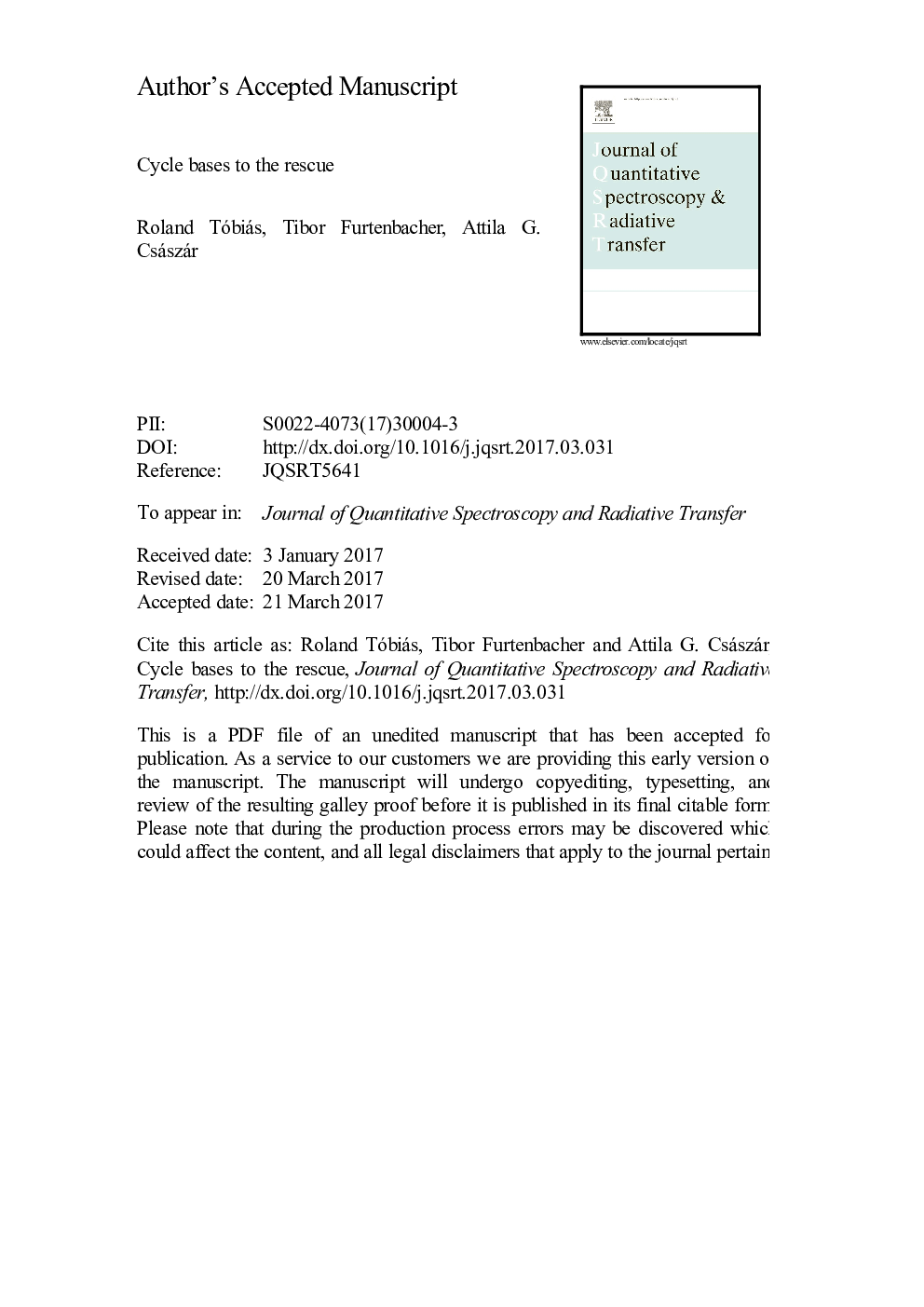| Article ID | Journal | Published Year | Pages | File Type |
|---|---|---|---|---|
| 7846549 | Journal of Quantitative Spectroscopy and Radiative Transfer | 2017 | 30 Pages |
Abstract
Cycle bases of graph theory are introduced for the analysis of transition data deposited in line-by-line rovibronic spectroscopic databases. The principal advantage of using cycle bases is that outlier transitions -almost always present in spectroscopic databases built from experimental data originating from many different sources- can be detected and identified straightforwardly and automatically. The data available for six water isotopologues, H216O, H217O, H218O, HD16O, HD17O, and HD18O, in the HITRAN2012 and GEISA2015 databases are used to demonstrate the utility of cycle-basis-based outlier-detection approaches. The spectroscopic databases appear to be sufficiently complete so that the great majority of the entries of the minimum cycle basis have the minimum possible length of four. More than 2000 transition conflicts have been identified for the isotopologue H216OÂ in the HITRAN2012 database, the seven common conflict types are discussed. It is recommended to employ cycle bases, and especially a minimum cycle basis, for the analysis of transitions deposited in high-resolution spectroscopic databases.
Related Topics
Physical Sciences and Engineering
Chemistry
Spectroscopy
Authors
Roland Tóbiás, Tibor Furtenbacher, Attila G. Császár,
